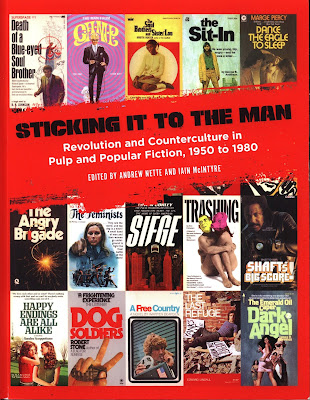Book Review: 'Soldiers of Paradise' by Paul Park
3 / 5 Stars
‘Soldiers of Paradise’ first was published in 1987 in hardcover by Arbor House. This mass market paperback edition (281 pp) was published in January 1990 by Avon Books. The striking cover illustration is by Gary Ruddell.
‘Soldiers’ is the first volume in the so-called ‘Starbridge’ trilogy, with ‘Sugar Rain’ (1989) and ‘The Cult of Loving Kindness’ (1991) the succeeding volumes.
A 1989 Science Fiction Book Club edition, titled ‘The Sugar Festival’, is an omnibus edition of the first two novels in the trilogy.
On a nameless planet, each season lasts for a century. For the city of Charn, located in the temperate zone, the advent of Winter brings with it a protracted struggle for survival, a struggle that is at its direst in early Spring, when the earth is devoid of all vegetation, and the barren earth awaits the life-giving Sugar Rains.
Order and disciple in Charn are maintained by the oligarchs of the Starbridge clan, who use a complicated theology, loosely centered on predestination, to alternately goad and coerce the Lumpen Proletariat into acquiescence. Dissent is cruelly suppressed.
As the novel opens, Abu Starbridge, a prince of Charn and an alcoholic, is on another of his self-absorbed jaunts into the slum districts. Abu Starbridge is accompanied by his friend, the doctor Thanakar. The two men are aware that their civilization is deeply dysfunctional but, lacking any ideas as to how to correct it, are mired in depression; the visits to the slums serve as a sort of lowlife-associated escapism.
As the Spring advances, and with it the advent of the Sugar Rains, the already fragile fabric of society begins to break down. There are race riots, pogroms, religious cults, madmen, and anarchists loose on the streets of Charn. Abu Starbridge and Thanakar the Doctor find themselves forced to choose between perpetuating the established order, or forsaking their lives of privilege in order to address their consciences. Either choice brings with it a risk of death and damnation……..
‘Soldiers of Paradise’ is not a very accessible novel. Author Park is quite earnest in his desire to employ an ornate, even poetic prose style, one that relies heavily on descriptive passages plentifully endowed with ‘empty’ sentences, metaphors, and similes. This obliges the reader to persevere, particularly in the opening chapters when the narrative is preoccupied with recounting the travails of a wasteland dweller (or 'Antinomial') whose interactions with the Starbridges have been marked by considerable violence.
While this authorial style works reasonably well in terms of world-building and characterization, it renders the plot as something of a thin scaffolding. Indeed, the first major plot development (a clash between armies of the state church and those of Argon Starbridge, a heretic) doesn’t arrive until the book’s half-way point. As well, I found the novel's denouement to be underwhelming; this perhaps was because author Park was reluctant to hamstring the narratives of the followup volumes.
As for subplots, these tend to pop up, and some (such as Thanakar's experiments into reversing the slow suicide of those Starbridges deemed too old and infirm to be of value to the oligarchy) are interesting. But overall, they tend to have a half-formed quality, which means they leave little impact on the narrative as a whole.
I finished ‘Soldiers of Paradise’ thinking that it is very much a foundational predecessor to the modern-day Dark Fantasy genre, and a signpost to its well-known practitioners such as China Mieville, Alan Campbell, and Tim Lebbon.
If you are at ease with reading novels with a high index of surrealistic / phantasmagorical content, and writing which focuses on atmosphere and mood rather than action, then you may have the patience to finish ‘The Soldiers of Paradise’. Others, however, likely will not find the novel very rewarding.
























































































